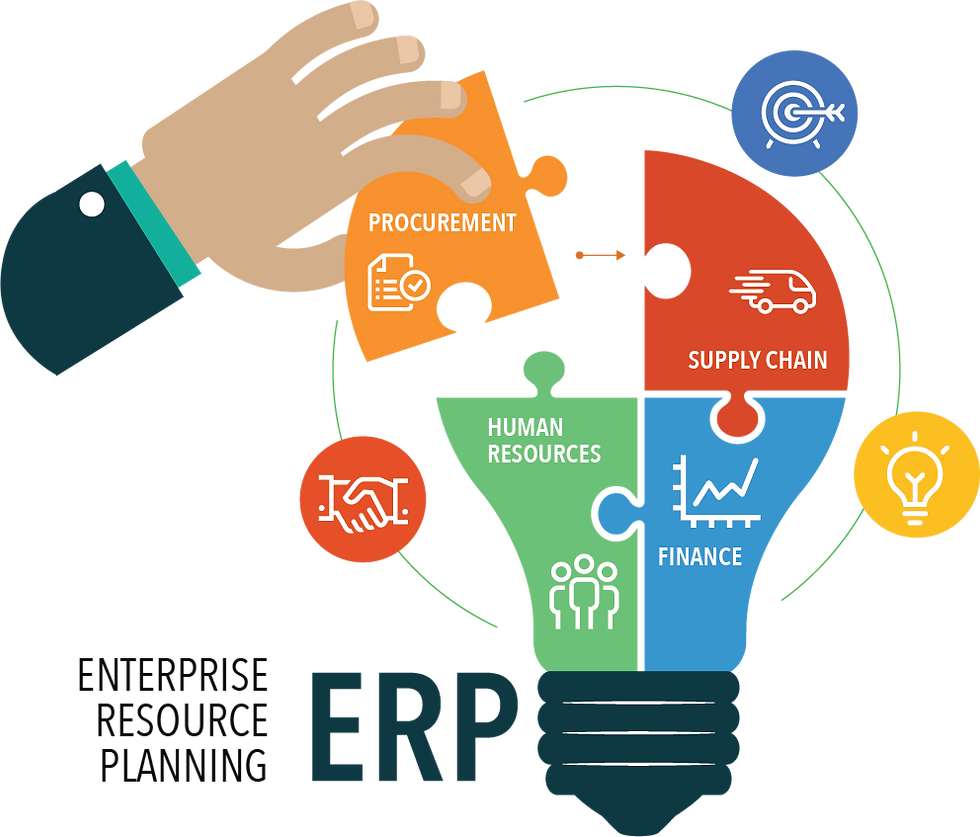Employee Database Management System: Enhancing Efficiency and Organizational Productivity
- solutionscakiweb
- Mar 4, 2024
- 4 min read
Introduction:
In today's dynamic business environment, the effective management of human resources is critical for the success and sustainability of any organization. Employee Database Management Systems (EDMS) play a pivotal role in streamlining HR processes, enhancing data accuracy, and promoting overall organizational efficiency. This article delves into the significance of EDMS, its key features, benefits, challenges, and best practices for implementation.
I. Importance of Employee Database Management Systems:
1. Centralized Data Repository: An EDMS serves as a centralized repository for all employee-related information. This includes personal details, employment history, training records, performance evaluations, and more. This consolidation eliminates the need for disparate systems, reducing the chances of data redundancy and ensuring data integrity.
2. Efficient Data Retrieval: With a well-structured EDMS, HR professionals can swiftly retrieve relevant information. This not only saves time but also enhances decision-making processes, such as promotions, talent acquisition, and performance appraisals.
3. Compliance and Security: Employee data is often sensitive and subject to various regulations. An EDMS helps organizations adhere to data protection laws by implementing robust security measures. This ensures that confidential information is accessed only by authorized personnel, mitigating the risk of data breaches.
II. Key Features of Employee Database Management Systems:
1. User-Friendly Interface: A successful EDMS incorporates a user-friendly interface, making it easy for HR professionals and administrators to navigate and manage the system efficiently. Intuitive design reduces the learning curve and promotes widespread adoption within the organization.
2. Customizable Access Levels: EDMS should offer customizable access levels, allowing organizations to define who can view, edit, or delete specific information. This feature is crucial for maintaining data security and ensuring that only authorized personnel can access sensitive data.
3. Integration with Other HR Modules: To maximize efficiency, EDMS should seamlessly integrate with other HR modules, such as payroll, performance management, and recruitment. This integration facilitates a holistic view of employee information and ensures a cohesive HR ecosystem.
4. Automated Workflows: Automation is a key aspect of modern EDMS. Automated workflows streamline routine HR processes, such as onboarding, leave approvals, and performance reviews. This not only reduces manual workload but also minimizes the risk of errors.
III. Benefits of Employee Database Management Systems:
1. Increased Efficiency and Productivity: EDMS streamlines HR processes, eliminating manual paperwork and reducing the time spent on administrative tasks. This efficiency boost allows HR professionals to focus on strategic initiatives, contributing to overall organizational productivity.
2. Accurate and Timely Reporting: The centralized nature of EDMS ensures the accuracy of employee data. This, in turn, facilitates the generation of timely and accurate reports, enabling data-driven decision-making by management.
3. Enhanced Employee Experience: An efficient EDMS contributes to a positive employee experience by ensuring that HR services are delivered promptly and accurately. Employees can access and update their information easily, fostering a sense of control and engagement.
4. Improved Compliance and Risk Management: Compliance with data protection laws and regulations is a critical aspect of HR management. EDMS helps organizations stay compliant by implementing robust security measures and providing audit trails, reducing the risk of legal issues and financial penalties.
IV. Challenges in Implementing Employee Database Management Systems:
1. Resistance to Change: Employees may resist transitioning from traditional methods to an EDMS due to a fear of change. Addressing this resistance requires effective communication, training programs, and showcasing the benefits of the new system.
2. Data Migration Issues: Migrating existing employee data to a new system can be challenging. Ensuring data accuracy and completeness during the migration
process is crucial. Organizations need to invest time and resources in thorough planning and testing to mitigate potential data migration issues.
3. Integration Challenges: Integrating EDMS with existing HR modules or other enterprise systems may present challenges. Compatibility issues, data mapping, and system synchronization need careful consideration during the implementation process.
4. Cost and Resource Allocation: Implementing an EDMS requires a significant investment in terms of technology, training, and human resources. Organizations need to carefully assess their budget constraints and allocate resources effectively to ensure a successful implementation.
V. Best Practices for Implementing Employee Database Management Systems:
1. Needs Assessment: Before implementing an EDMS, conduct a comprehensive needs assessment to understand the specific requirements of your organization. Identify key features and functionalities that align with your HR processes and goals.
2. User Training and Support: Invest in comprehensive training programs to familiarize users with the new EDMS. Provide ongoing support to address any issues or questions that may arise during the transition period, ensuring a smooth adoption process.
3. Data Security Measures: Prioritize data security by implementing robust encryption, access controls, and authentication mechanisms. Regularly update security protocols to stay ahead of emerging threats and protect sensitive employee information.
4. Pilot Testing: Conduct pilot testing with a small group of users before rolling out the EDMS across the entire organization. This allows for identification and resolution of any potential issues, ensuring a more successful and seamless implementation.
5. Regular System Audits: Perform regular audits of the EDMS to ensure data accuracy, integrity, and compliance. Regularly update the system to incorporate new features, security patches, and improvements to keep it aligned with evolving organizational needs.
Conclusion:
In conclusion, Employee Database Management Systems are indispensable tools for modern organizations seeking to optimize their human resources management processes. By centralizing employee information, streamlining workflows, and enhancing data security, EDMS contributes significantly to increased efficiency, productivity, and overall organizational success. However, successful implementation requires careful planning, consideration of challenges, and adherence to best practices. With the right approach, an effective EDMS can serve as a cornerstone in fostering a positive work environment and driving organizational growth.




Comments